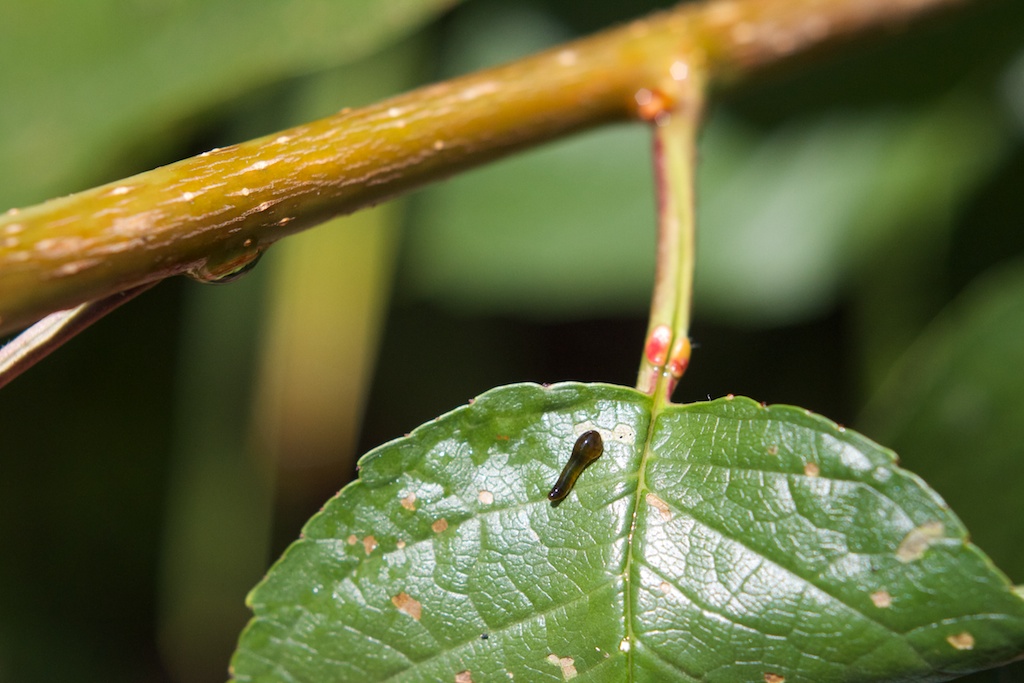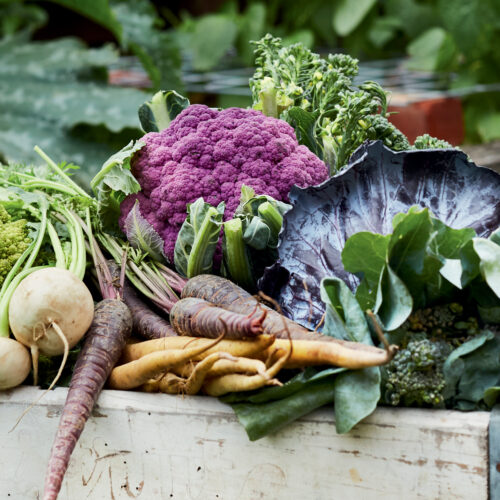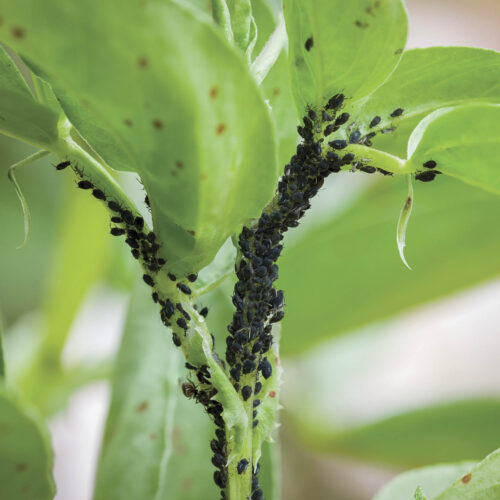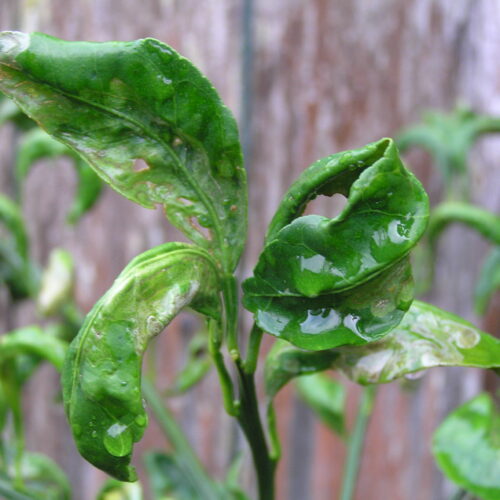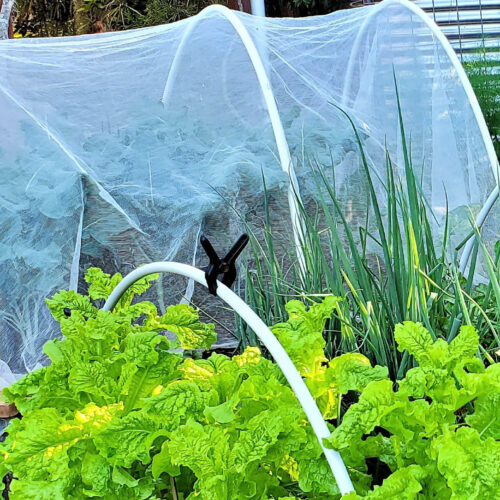Pear and cherry slug
2013-12-27T05:48:08+11:00
Pear and cherry slug can be a problem for many types of fruit trees. Penny Woodward suggests how to take control if you find them in your garden.
I’m sure I only checked yesterday, or maybe it was a few days ago; it’s easy to lose track at this time of year. Today I just checked again and seemingly out of nowhere they have appeared. Already there’s a lot of damage and numerous little slimy black and brown slugs chewing though the leaves on my two-year-old cherry trees.
These pesky pests are of course pear and cherry slugs. They are the soft-skinned larvae of a glossy black sawfly (Caliroa cerasi), and will quickly skeletonise cherry and pear leaves if left to their own devices. They also attack plums, apricots, hawthorn, apples and quinces, but are not as problematic on these trees.
Take control
You can treat initially by picking or squashing or hosing off. If there are too many, then dust with wood ash or chalk, flour or powdered clay (make sure you stand up-wind). All of these desiccate the skin surface so that the slugs shrivel and die. You can also use lime powder or lime dissolved in water. Alternatively spray with organic pyrethrum or neem. I manage to control them by squashing and hosing, and then I follow up by flinging wood ash over the leaves. I save the ash from our winter fires. Wood ash is also beneficial to soil as it adds potash that aids flowering and fruiting, but don’t use it too often. I will sometimes use lime, but I also don’t use this too often as it alters the pH of the soil, making it more alkaline.
The life cycle
The adult sawfly lays eggs on the leaves which hatch out into the slugs in spring. The slugs feed on and skeletonise the leaves, resulting in a typical lacey look. Once the slugs reach full size they drop off the leaves onto the ground where they burrow down into the soil to pupate. The adults emerge, flying to the leaves to repeat the cycle. There are two generations each year. The first slugs pupate and turn into adults again in January so its really important to get the slugs under control in this first generation, as the second generation is much more numerous and can completely strip every leaf on a tree.
Some longer term control comes from predatory insects like hoverflies, paper wasps and lacewings, as well as spiders and insect eating birds like wrens. Plant flowers and flowering shrubs near your fruit trees to attract these useful predators into your garden.
The sense that pear and cherry slugs appear from nowhere originates from the larvae that overwinter in the soil. They hatch out and appear the following spring to start the annoying cycle all over again. Maybe next year I’ll catch them earlier.

